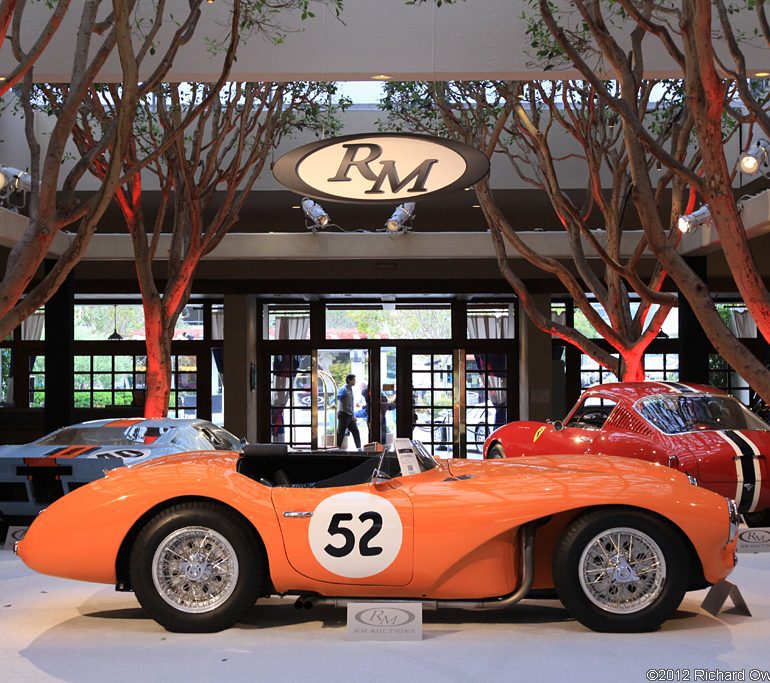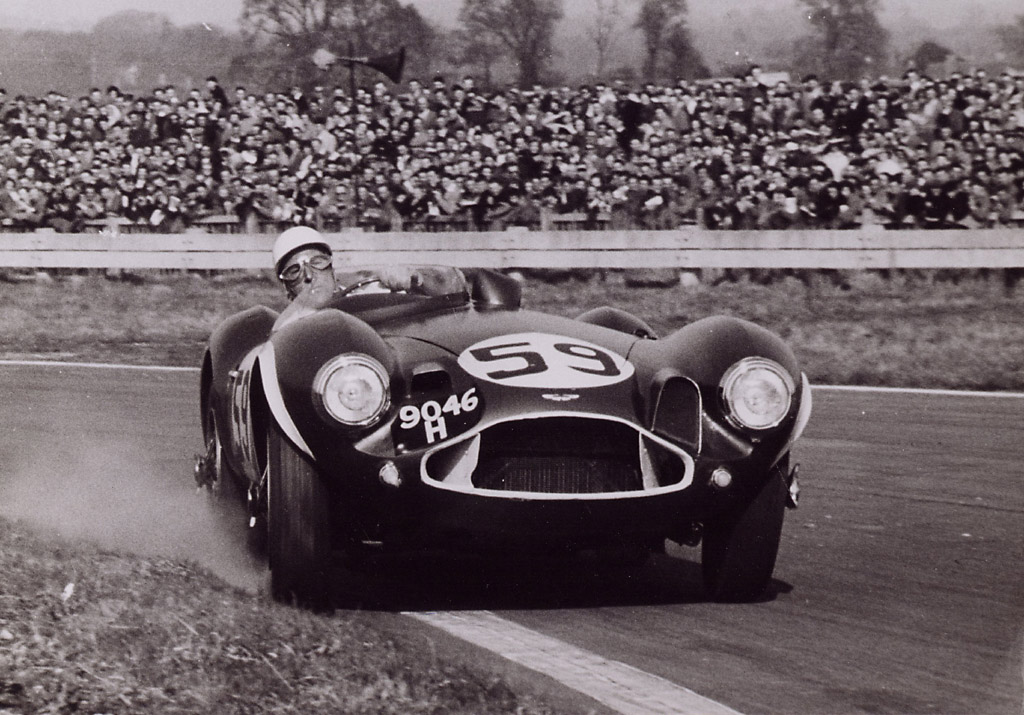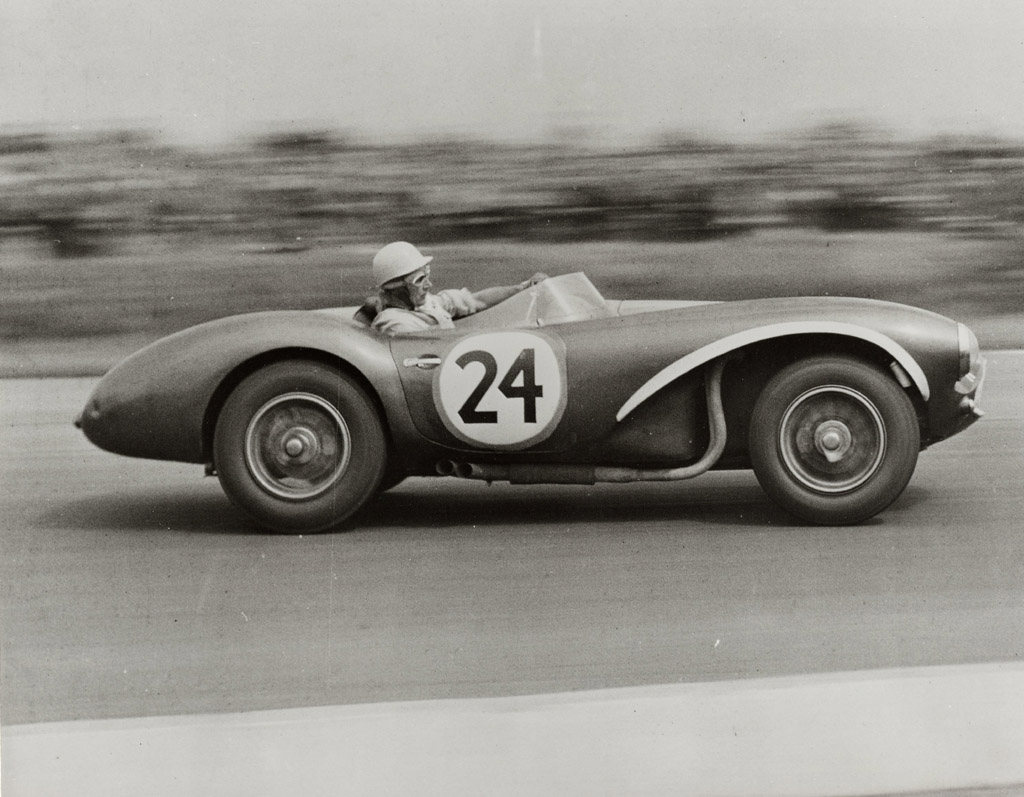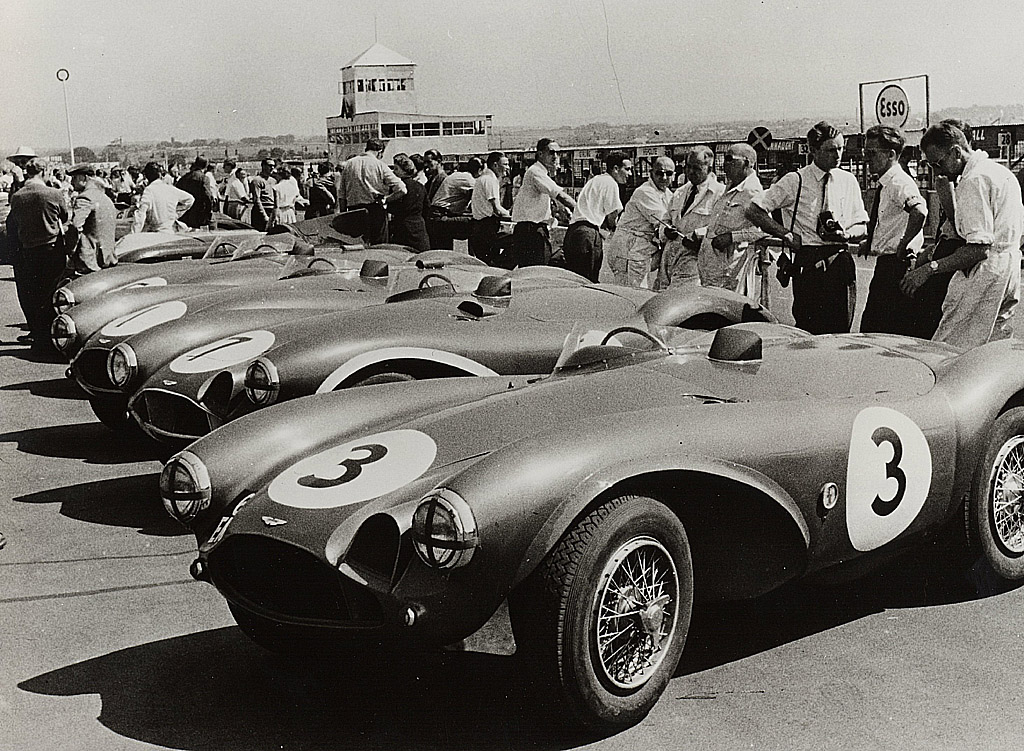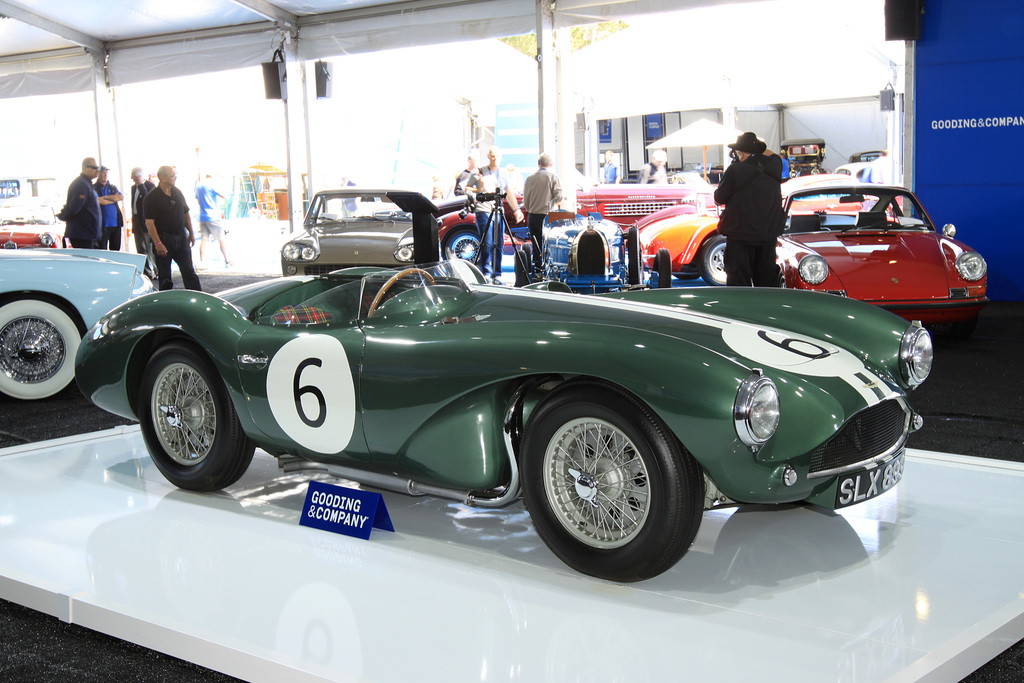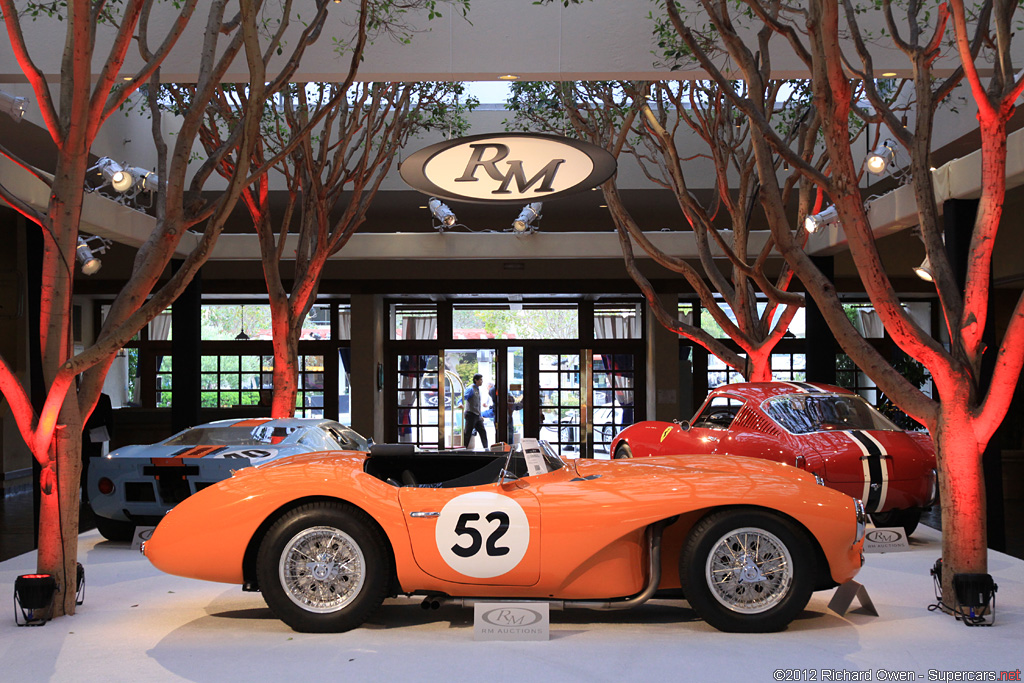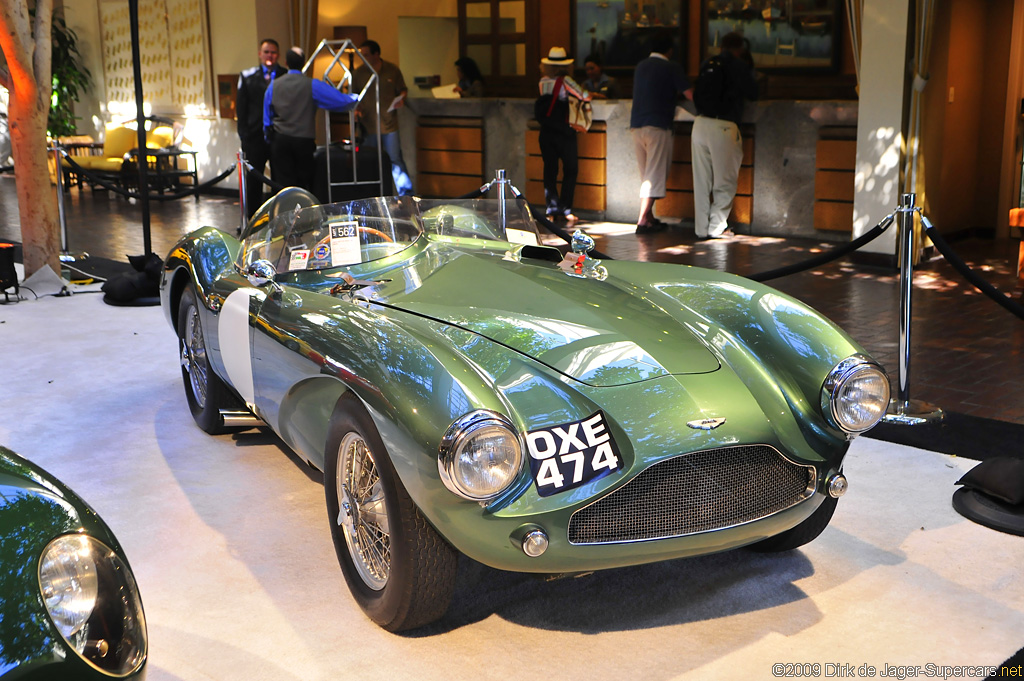1953→1955 Aston Martin DB3S
Having minimal success with the DB3, Aston Martin had designer A.G. Watson engineer a new car. In May of 1953 a new prototype appeared at Charterhill. The car was largely based on the DB3 and featured a lighter chassis with a reduced wheelbase.
Through the years of 1953 to 1957, the DB3 raced and evolved greatly. The first version featured the specification below, with the final version having a 240HP supercharged Inline-6.
The DB3S introduced many welcomed changes over the DB3. Most importantly, the Salisbury hypoid-bevel final drive was replaced with a David Brown spirial-bevel verison. It was the hypoid spiral drive which retired two DB3s at the 1952 Le Mans. Other changes included a new body, chassis and rear suspension geometry.
DB3Ss helped Aston Martin establish many international victories. During its debut at Charterhill, a DB3S driven by Reg Parnell beat out an Ecurie Escosse C-Type for an overall victory. Shortly after, three DB3Ss raced Le Mans with little success. This was the only race which Aston Matrin lost in 1953. During the Tourist Trophy, Goodwood Nine Hours and British Empire Trophy, Aston Matrin took overall victories against British competition. With some newely found victories, Aston Martin looked to secure more international success.
In 1954, the DB3Ss didn’t take overall victory at Le Mans, Sebring or the Milla Miglia. For Silverstone, two coupe versions were made up with twin-spark engines developing 225 horsepower. One of the Le Mans cars was fitted with a supercharger for the first time. This helped the car develop 240 horsepower at 6000 rpm. Despite the developments, a 4.9 litre Ferrari took the victory at LeMans.
In 1955, Aston Martin benefitted from a 3-litre sports cars limitation on engine capacity. This year Aston Martin abandoned the DB3S coupes which raced and crashed at Le Mans. These designs were very unstable at high speeds. Both coupes were rebodied as open cars for the 1955 season. Victory was seen at Silverstone with a second place at Le Mans. This was the best LeMans result Aston Martin achieved up to 1955.
1956 was a non-eventfull year for Aston Martin. A second place was again achieved by Moss and Colins at LeMans. It was also this year that Aston Martin started to focus on an all-new car that would see most success the firm had ever achieved. This car was the DBR1 which replaced the DB3S in 1957.
From 1953 to 1957 around 30 DB3Ss were produced. Eleven of these were factory works cars. The Aston with a blue egg crate grill featured above is a factory team car DB3S/10.
Story by Richard Owen
In Detail
| submitted by | Richard Owen |
| type | Racing Car |
| production years | 1953 – 1955 |
| built at | Feltham, England |
| engine | Water-Cooled, Twin Spark, Inline-6 |
| position | Front Longitudinal |
| valvetrain | DOHC 2 Valves per Cyl |
| displacement | 2922 cc / 178.3 in³ |
| bore | 83 mm / 3.27 in |
| stroke | 90 mm / 3.54 in |
| compression | 8.5:1 |
| power | 167.8 kw / 225.0 bhp @ 5500 rpm |
| specific output | 77.0 bhp per litre |
| bhp/weight | 262.85 bhp per tonne |
| torque | 246.76 nm / 182.0 ft lbs @ 3800 rpm |
| body / frame | Aluminum over Tubular Frame |
| front tires | 6×16 |
| rear tires | 6×16 |
| front brakes | Al-Fin Drums |
| rear brakes | Inboard Al-Fin Drums |
| steering | Rack & Pinion |
| f suspension | Trailing Arms w/Torsion Bars w.Anti-Roll Bars |
| r suspension | De Dion Axle w/Trailing Links, Transverse Torsion Bars |
| curb weight | 856 kg / 1887 lbs |
| wheelbase | 2210 mm / 87.0 in |
| front track | 1244 mm / 49.0 in |
| rear track | 1244 mm / 49.0 in |
| length | 3905 mm / 153.7 in |
| width | 1492 mm / 58.7 in |
| height | 1054 mm / 41.5 in |
| transmission | S430/12 4-Speed Manual |
| gear ratios | 2.29:1, 1.87:1, 1.26:1, 1.00:1 |
| final drive | 3.727:1 |
| top speed | ~225.3 kph / 140.0 mph |
Auction Sales History
Auction Source: 2014 Pebble Beach Auctions by Gooding & Company
Auction Source: Monterey 2012 by RM Auctions
1955 Aston Martin DB3S/104 – s
Auction Source: 2009 RM Auctions Sports & Classics of Monterey


